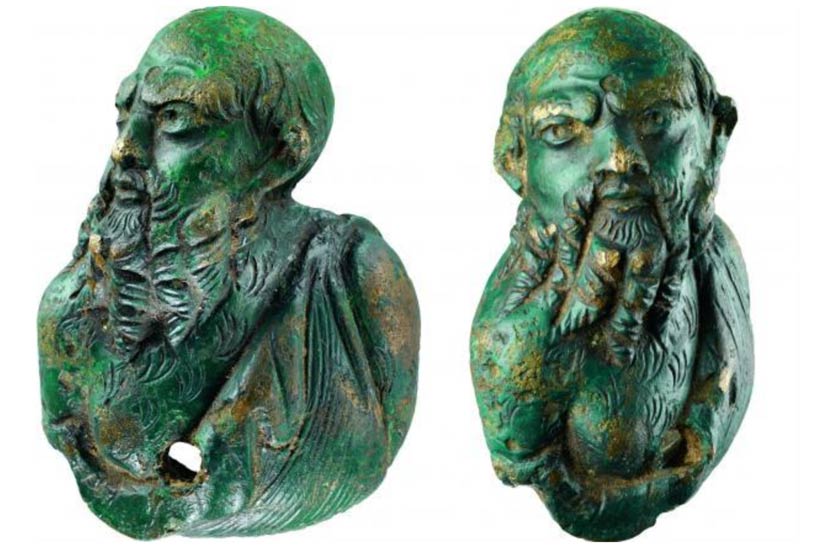Ancient Roman bronze figure of mythological Silenus found on Danish island
A small Roman bronze figure representing Silenus, the mythological companion and tutor to the wine god Dionysus, has been found on the Danish island of Falster. The miniature bust dates back nearly two millennia and, while it is unknown exactly how the figure ended up on the island, the discovery suggests close contact between the Roman Empire and Scandinavia in the 1 st century AD.
Science Nordic reports that the tiny bronze figure, measuring just 4.5 cm, was found by a woman using a metal detector, who handed her finding over to the National Museum of Denmark. Experts were able to determine that the figure dates back to the time of Rome’s first emperor, Augustus (63 BC – 14 AD), and represents Silenus, a mythological creature based on the Greek figure of the same name.

The Danish island of Falster (Wikimedia Commons)
In Greek mythology, Silenus (plura sileni) was a teacher and faithful companion of the wine-god Dionysus. The original Silenus resembled a folkloric man of the forest with the ears of a horse and sometimes also the tail and legs of a horse. The later sileni were drunken followers of Dionysus, usually bald and fat with thick lips and squat noses, and having the legs of a human.

Silenus holding the baby Dionysus, Vatican Museum (Wikimedia Commons)
“In Roman art Silenus is also seen together with satyrs, here accompanying Bacchus, the Romans' equivalent of Dionysus,” writes Science Nordic. “He is usually seen in a drunken state and either has to be carried by others or hangs over the back of a mule.”
Satyrs are horse-like companions of Dionysus. They are depicted as men with equine features, such as a horse-tail, horse-like ears, and sometimes a horse-like phallus.

'The Drunken Silenus' by Peter Paul Rubens (Wikimedia Commons)
The bronze figure is believed to be a piece of ornamentation attached to the headrest of a lectus, a Roman-style couch on which people lay down to dine on special occasions. They were often decorated with figures related to food and wine, including Silenus.
Science Nordic writes that the “Selinus bust would typically sit, rather like a medal, on one end of the s-shaped fulcrum that formed the side of a headrest. The other end of the fulcrum was shaped like the head of a mule, the mule that carried the drunken Selinus.”

Painting depicting Roman lecti (Tosefta Blog)
Science Nordic reports that some of Falster’s neighboring islands had close connections with the Roman Empire around the 1 st century AD. However, this is the first finding of its kind to have been found on Falster.
“The uncertainty as to whether they came to Denmark as loose objects or actually adorned furniture makes is difficult to determine why they were brought,” Science Nordic says. “However, for the time being, we believe it is most likely that the bronze artefacts were brought to Denmark solely as curiosities or objects of art, as gifts, war trophies or traded goods.”
Featured image: The 4.5 cm tall Roman bronze figure representing Silenus found recently on the Danish island of Falster. (Photos: National Museum of Denmark)

















